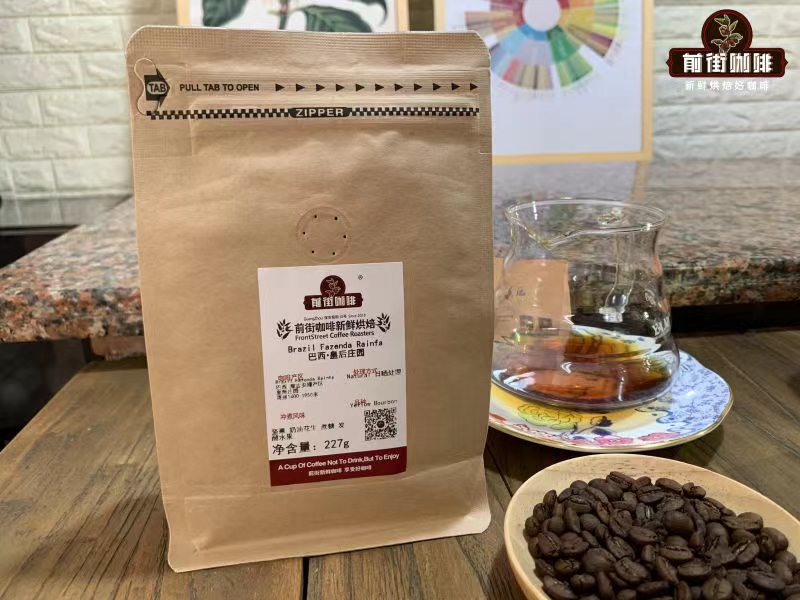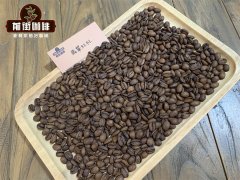What is the unique classification of Brazilian coffee beans? the processing of Brazilian coffee beans
Brazilian coffee, which accounts for more than 40% of the global coffee production, is the largest coffee producing country in Central and South America, and it is also the largest coffee producing country in the world. Its geographical environment is lower than that of other coffee producing areas in Central and South America, and the terrain is relatively flat. The elevation of coffee producing areas is about 1000 to 1400 meters. In addition, most coffee growing methods in Brazil are mainly sun-exposed. Therefore, most of the coffee beans are soft beans with low density, with more milky, chocolate and nutty flavor, low acidity and well-balanced mellowness, no matter in Arabica or Robusta coffee beans. All belong to the popular style.
Classification of Brazilian coffee beans
Brazilian coffee beans, which grow in lower altitude, are mainly soft beans, which are mainly soft beans due to the influence of high temperature and fast ripening speed. The soft beans have a balanced and smooth taste, showing a more mellow and thick coffee body. And because of the less obvious acidity, it sets off the proportion of sweetness, and it is also a coffee flavor acceptable to most drinkers.
Brazilian coffee beans have their own unique classification, which is classified according to defects, taste and cup tests, which is more complex than other coffee producing countries:

Defect degree classification
There are 7 levels: Type 2, Type 2, Type 3, Type 3, Type 4, Type 4, Type 8.
Type 2 is the highest grade, with a score of 100%. Type 8 is the lowest limit, with a score of-200
Taste grading
There are 7 levels: Strictly Soft, Soft, Softish, Hard, Hardish, Rio / Rioy, Rio Zona
Strictly Soft is the highest grade with extremely smooth taste, while Rio Zona is the lowest grade with extremely strong iodine flavor.
Cup test classification
There are 6 levels: Fine Cup (FC), Fine, Good Cup (GC), Fair Cup, Poor Cup (PC), Bad Cup (BC)
Fine Cup is the highest grade and Good Cup is superior. These two grades are the most common in the market.
Processing methods of Brazilian Coffee beans
Brazilian coffee beans, which are famous for their cleanliness, balance, sweetness and sweetness, are a bit monotonous, but because of their low sour and bitter taste and obvious sweetness, they can be said to be an entry-level flavor acceptable to drinkers who are new to the coffee world. because of its easy-to-import bean nature, it is favored by many commercial beans and often becomes one of the important roles in the designated blending of mixed beans.
Brazilian coffee beans have inherent advantages-smooth taste, continuation of colonial planting habits, sufficient sunshine, and development of new processing methods. Brazil has always been the champion of coffee bean production in the world, but it is also because Brazil exports at least more than 40% of the world's coffee beans, as long as Brazil's coffee bean production increases or decreases, such as droughts, floods, storms and other natural disasters, whether Arabica boutique coffee beans or Robusta coffee beans will directly shake the price of coffee all over the world. Brazilian coffee beans play a leading role in the coffee market!
Important Notice :
前街咖啡 FrontStreet Coffee has moved to new addredd:
FrontStreet Coffee Address: 315,Donghua East Road,GuangZhou
Tel:020 38364473
- Prev

Novice Coffee entry what basic brewing equipment should be prepared for beginners to make coffee
The skill of brewing coffee by hand is the same as brewing Kungfu Tea. Different kinds of tea require different water temperature, utensils and brewing time, and so is tasting a good cup of coffee. Compared with machine brewing, through the extraction technique of hand-brewed coffee, we can have a better grasp of water temperature and water flow, and can restore the most primitive flavor of different coffee beans.
- Next

Where is the best coffee bean? pick the signs you need to pay attention to.
The market is full of boutique coffee, a variety of packaging, brands, origin, in the end how to correctly choose high-quality coffee beans? First of all, readers should realize that coffee is also a kind of perishable agricultural products, rather than a commodity that can be stored indefinitely in food storage cabinets. Even if coffee beans are not as perishable as fresh produce, their flavor is easy to fade.
Related
- What brand of black coffee is the most authentic and delicious? what are the characteristics of the flavor of the authentic Rose Summer Black Coffee?
- Introduction to the principle and characteristics of the correct use of mocha pot A detailed course of mocha pot brewing coffee is described in five steps.
- Which is better, decaf or regular coffee? how is decaf made?
- How much is a bag of four cat coffee?
- How about four Cat Coffee or Nestle Coffee? why is it a cheap scam?
- Which is better, Yunnan four Cats Coffee or Nestle Coffee? How about cat coffee? is it a fake scam? why is it so cheap?
- How about Cat Coffee? what grade is a hoax? which instant coffee tastes better, four Cat Coffee, Nestle Coffee or G7 coffee?
- Process flow chart of coffee making-Starbucks coffee making process what coffee tastes good at Starbucks
- The top ten best coffee beans in the world Rose summer coffee or Tanzanian coffee tastes good
- Yunnan four cat coffee is good to drink?_four cat coffee is a big brand? four cat blue mountain coffee is fake?

